INVESTIGATIONS! Design Project
A Path Through the Forest
By: Ann-Kathrin Salich, Christina Krampokouki, Daniel Dieren
CHORA Conscious City
Studio: Supply Chain Urbanism
Published on August 19, 2020
Emissions of the 21st century urbanization continue to increase while at the same time half of earth’s forests have been destroyed by ongoing human-induced deforestation. The next 100 years will be crucial for the future of the world. Based on the IPCC pathway 1 and 2, a roadmap using massive afforestation is proposed [1]. Afforestation will not be the sole solution to climate change but will play a big part in reforming the economic systems to more sustainability. Creating a new global forest network, 1.7 bn hectares of treeless land will be planted and lead to new urban possibilities. How will our path using the fill CO2 mitigation potential of the forest transform the earth?
In our scenario, we propose a pathway to 2100 that will sequestrate more than 1000 GT of carbon emissions. Additionally, through a complete halt of deforestation, 600 GT of carbon will remain stored in the already existing global forests. By replacing concrete constructions with timber constructions, an additional 100 GT of carbon will be avoided. These three principles - sequestration, storage and avoidance - form the basis of the forest pathway.
Countries show different sequestration capabilities that need be accounted for. As a result of this, the goal of massive afforestation is a global project, that requires a global network. Countries with the highest sequestration capabilities (biomass potential) will retransform their land use to battle global climate change via afforestation.
The Forest Global network in 2050: Biomass stock, deforestation and future cities
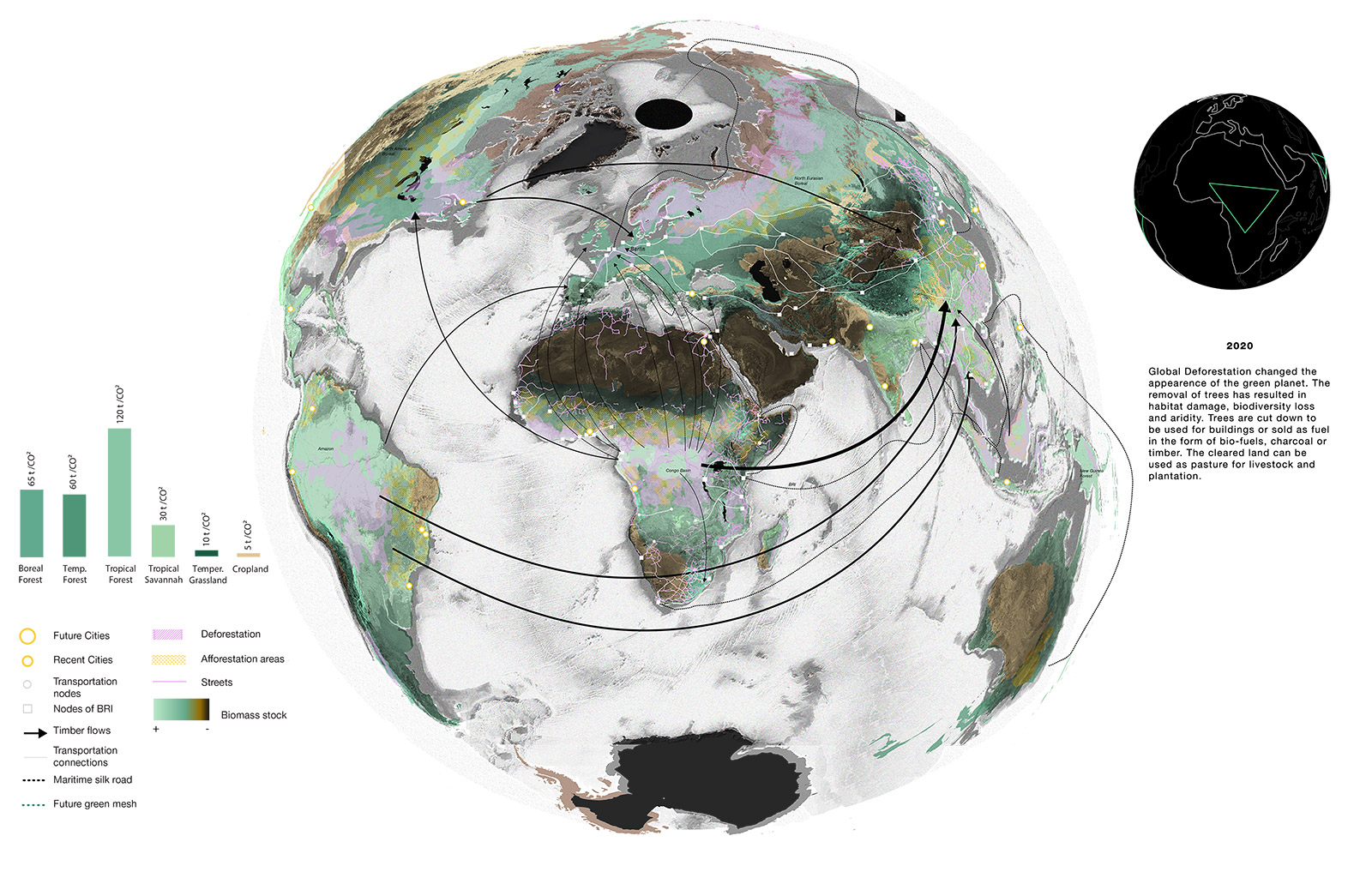
Biomass stock, deforestation and timber trade

The forest pathway: sequestration, storage and avoidance
Based on trees and its products a new global supply chain is born that puts sustainable economic principles in its center. “The forest unit” - a new form of carbon currency based on tree ownership – will propel the growth of forests.

Forest Unit
The forest unit can be used to balance the carbon footprint of a specific sub-group (community, city, company). An exchange of sub-groups with positive and negative unit balances is stimulated and leads to a global balancing program. Looking at the possible scenarios, we can understand the population and the community footprint, corresponding to the quantity of afforestation.

Carbon scenarios
In order to protect the forest habitat, its carbon storage as well as to make full use of its future worldwide carbon sequestration potential, it is necessary to connect different actors in rapid networks. The network will drive the capacity to build up and restore the new system forest ecosystem. Over time the global forest will turn into a decentralized, automated network system of trees, that controls the input and output of each forest through blockchain mechanisms.

Actor network and blockchain
Timber and non-timber materials will build and expand cities. Cellulose, lignin, wood, sugar, starch and oil are the main components of the forest economy. Timber will replace the carbon-inefficient structure of the cities of today.

Forest compounds

Forest products
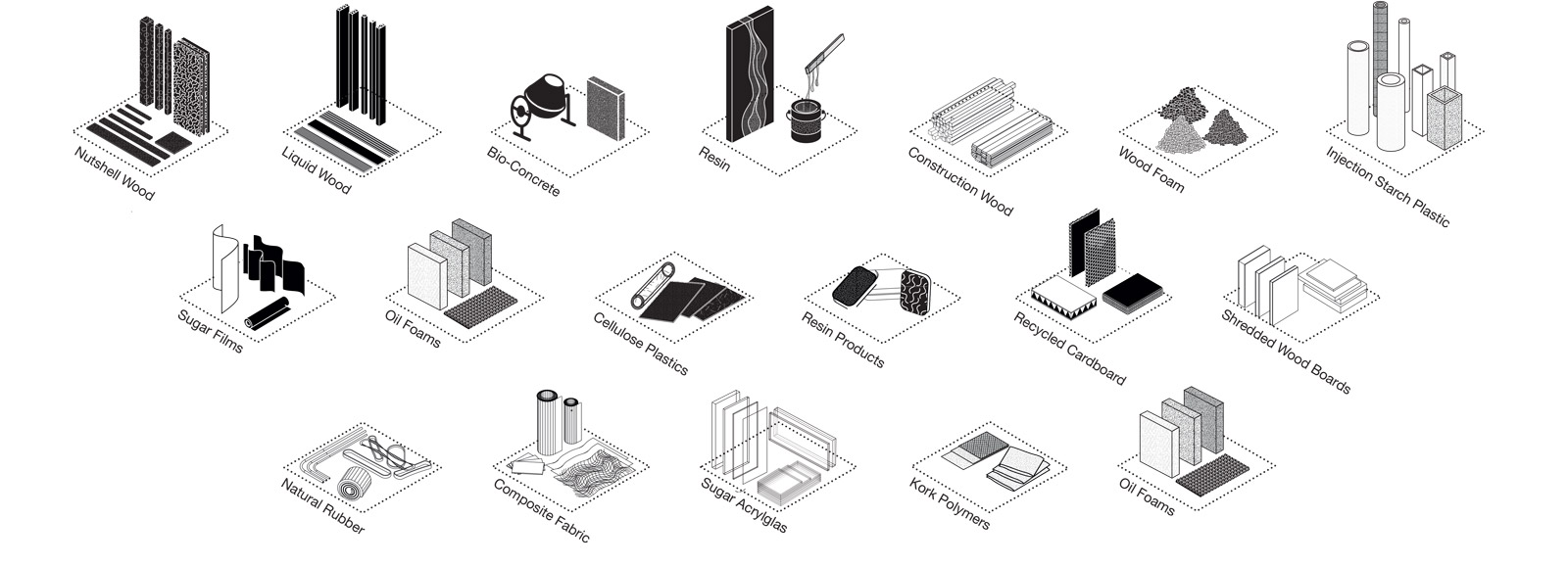
Timber products
As of today, the construction sector accounts for almost 23% of global carbon emissions. A scenario, that needs to be flipped with regards to the growing population and housing needs and the emerging the new cities. Bio-Industries, vertical farming, agroforestry, tree nursing, seed laboratories, waste management, recycling industries, energy systems and solar systems are the main components of the city.

Building Kits

City components
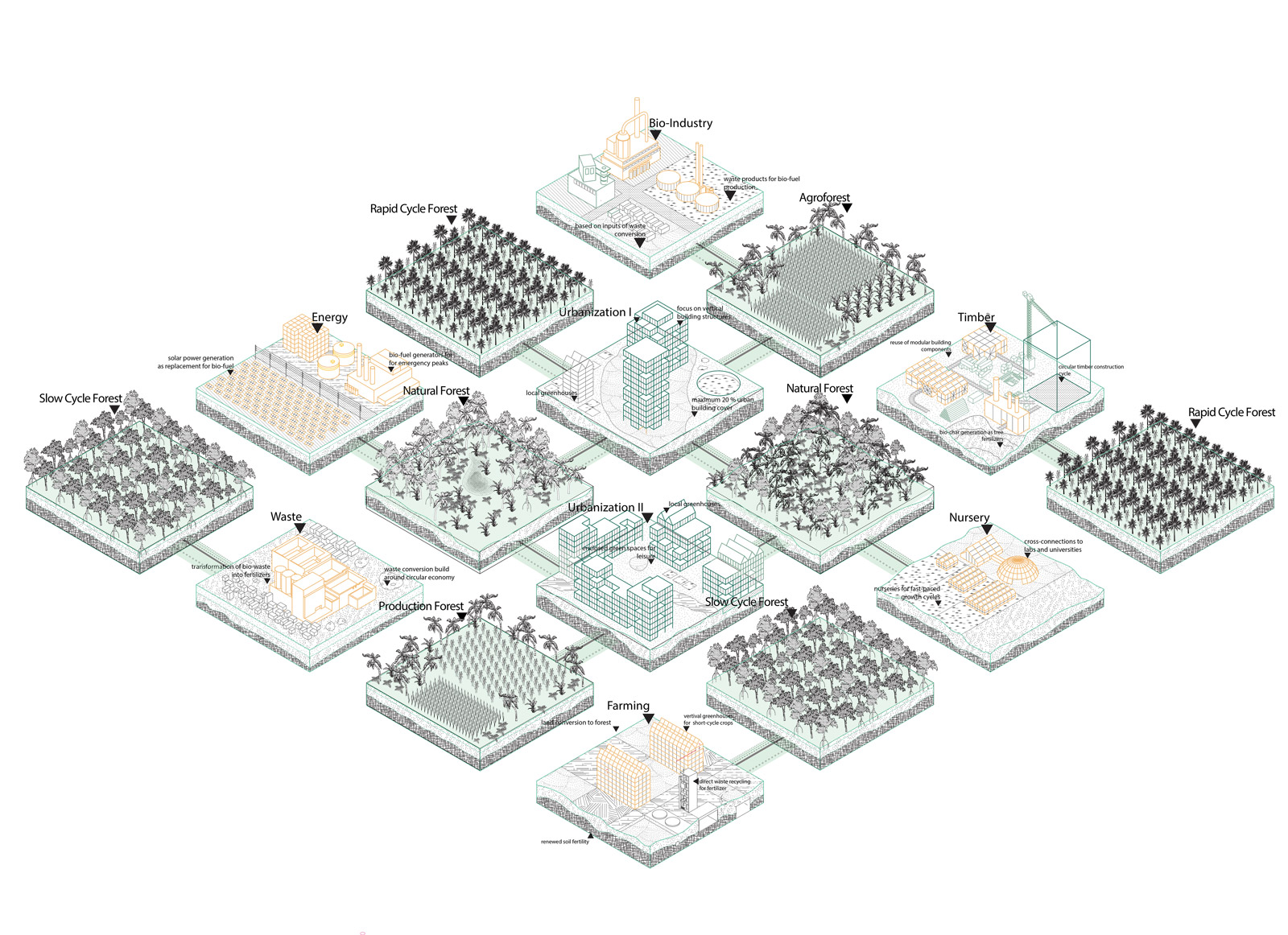
City connections
The global forest network will develop starting from Africa, a continent that is playing a major part in the development of the Belt Road Initiative (BRI) and will host the largest cities of the future. A proposed African “forest triangle” will become the new infrastructure and base for urbanization while protecting the Congo Basin.
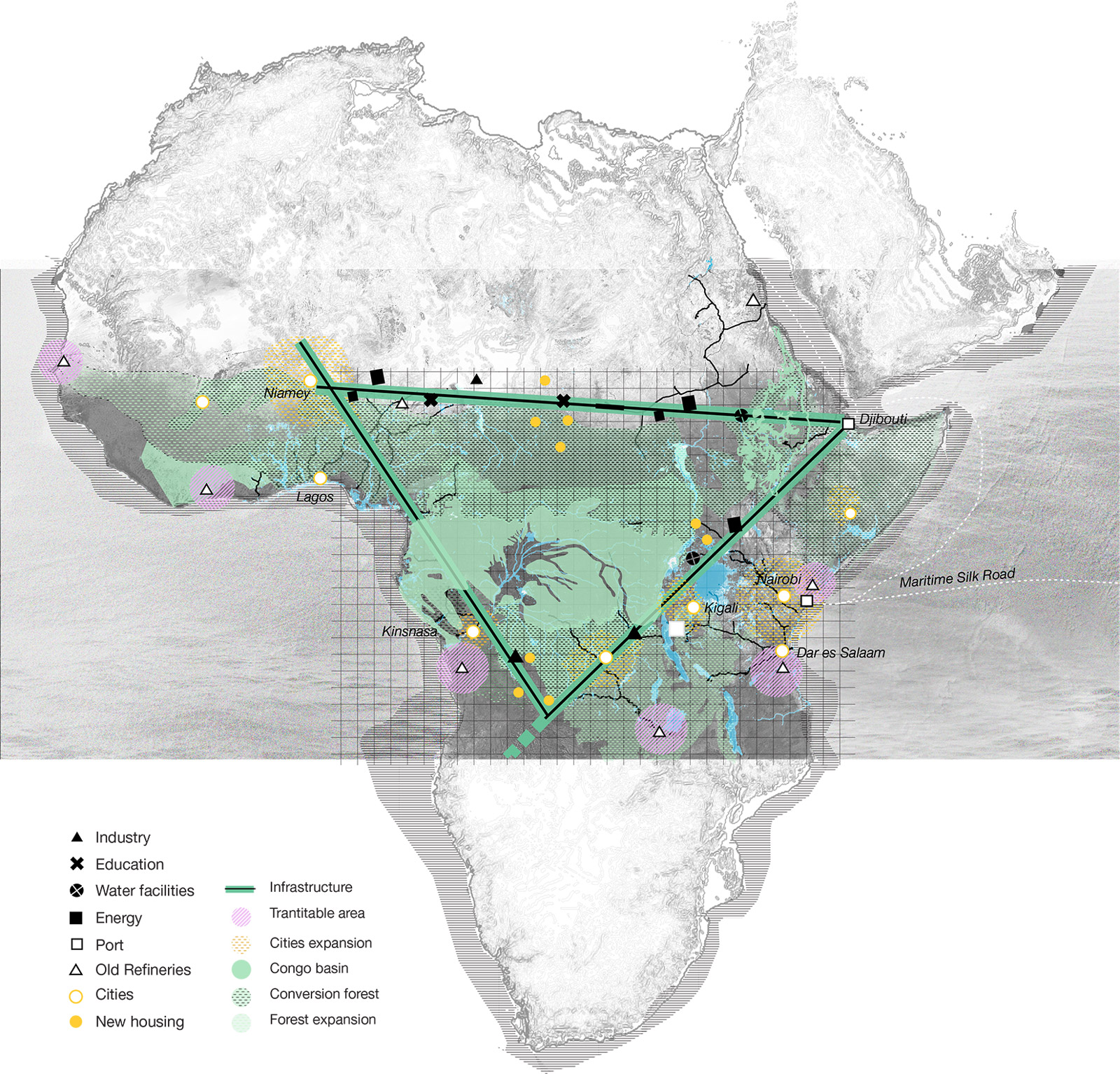
The “African Forest Triangle”
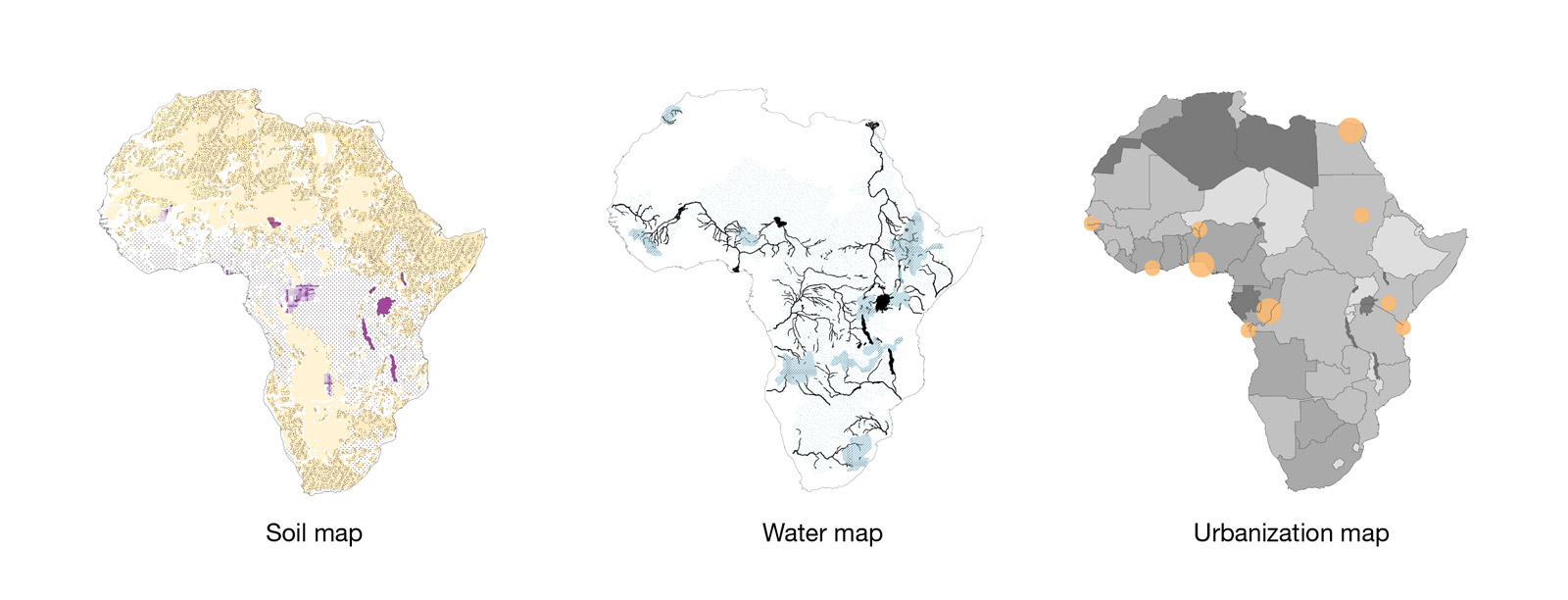
African analysis
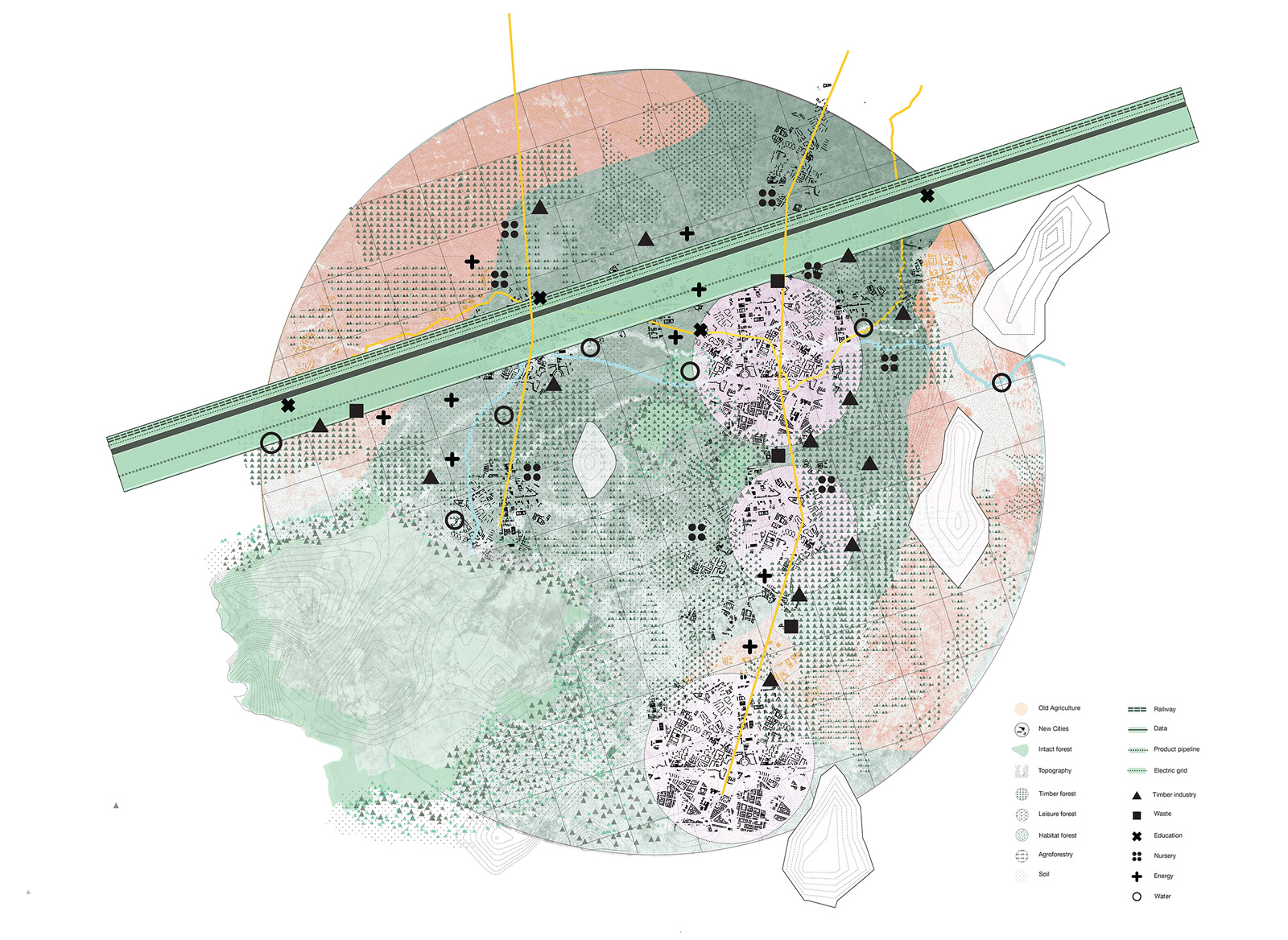
The growth of Nigerian communities close to the Global Forest Network
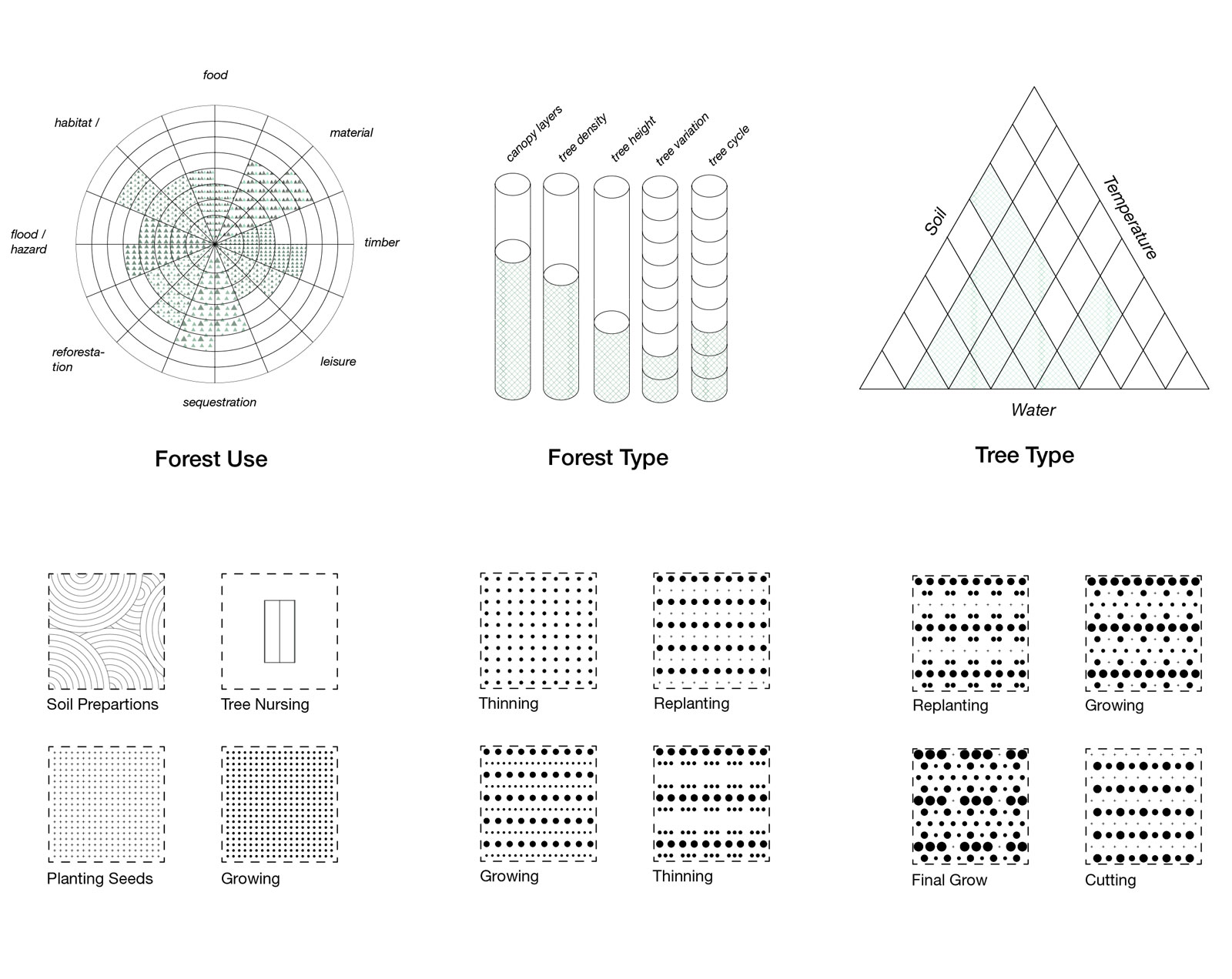
Forest use and growing patterns
Urbanization must adapt to the scale of trees. The impact of each urban component will be evaluated with regards to its connection to the forest. New and old settlements will grow together and connect to the green forest line. Efficient and systemized forest growth systems are used to fasten the sprawl of the global forest. Along the urban zones, agroforests, timber forests and production forests are built up now to serve communities in the future.
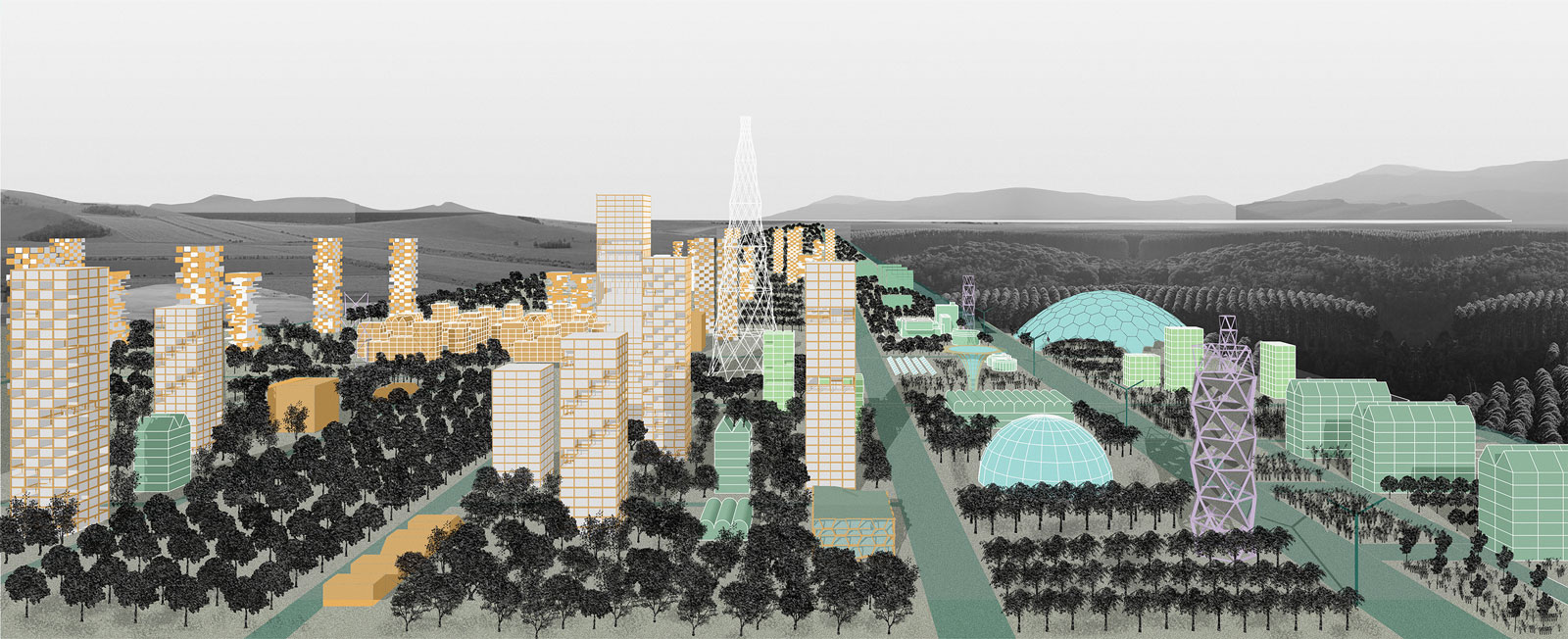
A future forest city
BB2040
[EN] Berlin Brandenburg 2040 was initiated by the Habitat Unit in cooperation with Projekte International and provides an open stage and platform for multiple contributions of departments and students of the Technical University Berlin and beyond. The project is funded by the Robert Bosch Foundation.
[DE] Berlin Brandenburg 2040 wurde initiiert von der Habitat Unit in Kooperation mit Projekte International und bietet eine offene Plattform für Beiträge von Fachgebieten und Studierenden der Technischen Universität Berlin und darüberhinaus. Das Projekt wird von der Robert Bosch Stiftung gefördert.










